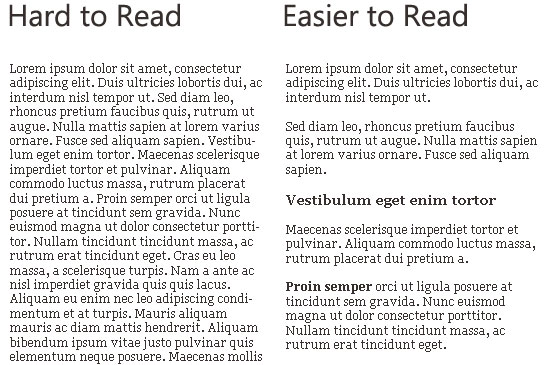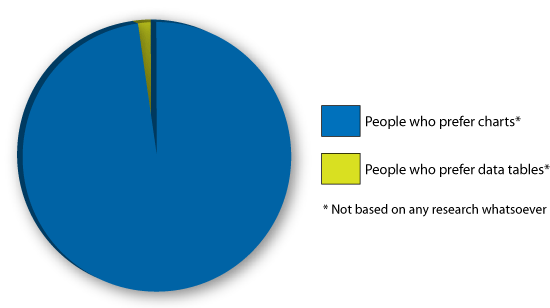-
 7 min. read
7 min. read
-
 William Craig
William Craig CEO & Co-Founder
CEO & Co-Founder
- President of WebFX. Bill has over 25 years of experience in the Internet marketing industry specializing in SEO, UX, information architecture, marketing automation and more. William’s background in scientific computing and education from Shippensburg and MIT provided the foundation for MarketingCloudFX and other key research and development projects at WebFX.
Today, almost everyone wants to share his or her thoughts on the web. And with so many easy ways of blogging brought to us by services like Posterous and Tumblr, why not do it, right? Nevertheless, we shouldn’t go around ranting uncontrollably about random stuff on the web.
If we really want to share something interesting with the community of our choice, we should, at the minimum, project professionalism and trustworthiness and emphasize the accuracy and quality of the writings we put on the internet. Whether you’re maintaining a personal blog, starting up a design blog, or managing and updating your company’s official blog, the fundamental tips and strategies discussed in this article will ensure that all of your posts will be professional, high-quality, and awesome to read.
Looking for an all-in-one SEO audit tool? You’ve found it.
SEO Checker provides data on key metrics to give you:
- Complete SEO score
- Content Grade
- Site Speed Analysis
- and more.

Why Should We Care About the Quality of Blog Posts?
It’s all about empathy.
But then again, everything in this world should come down to that. Design blogs, in particular, are an interminable source of information. This information, however, needs to be reliable and useful for it to really contribute value to the design community.
If we want to get reliable information, we should also worry about providing reliable information.
Considerations for Writing Solid Blog Posts
We can take many considerations into account when we are writing a blog post to share with the online community. The following tips cover essential things to keep in mind for every blog post your write.
Developing Your Idea and Post Title
Generating an idea for your blog post is the way we normally initiate the writing process. First and foremost, your ideas should be original — although we all know this is tougher than it sounds because there is already so much content out there.
When picking a topic to write about, make sure that you have the necessary knowledge and experience to competently write about the topic. This ensures your writing is authentic. You should also start thinking about a solid title for your idea that encompasses what you will be discussing.
Often, in blog writing, it can even be better to develop the post’s title before writing the post itself. Why is that? There are several reasons why writing a title first is a good idea:
- It gives you a starting point
- It gives you a concise idea to work with
- It gives you ideas for researching keywords
- It ensures you keep your writing focused because you can regularly check back to it as you write
The post’s title should be inviting. In the mind of the readers, your title should translate to “You need to read me right now!” Some examples of popular design-related topics include:
- Inspiration or resource lists (e.g. showcase of blog designs, free WordPress themes)
- New technologies (e.g. a guide on HTML5 canvas, a guide to new WordPress 3.0 features)
- Design theory and concepts (e.g. color theory, negative space)
- Design software and tools (e.g. color tools, 960 Grid System)
Frank Chimero, a celebrated graphic designer/blogger/teacher, has a very interesting way of explaining the way one can develop an idea — you should definitely check his illustration out.
Creating a Powerful Introduction
In order to engage readers from the start, you have to begin with an attractive abstract that succinctly encapsulates the subject of the blog post. This introduction should be short and concise — try keeping it within 3-5 sentences. After reading your introductory paragraph, readers should immediately know what they will be in for.
Think of your introduction as a sales pitch. Let the potential reader know why he or she should read the rest of the post by stimulating their curiosity and outlining the value they will obtain should they read the post. This introduction can also be useful for developing things such as post excerpts, metadata, descriptions for submitting to social news portals and so forth.
Using Research and Secondary Sources
A blog post should always have sound and accurate information.
It’s best to support ideas and arguments with secondary resources, quotes, and research studies. Linking to relevant sources reinforces the things you say in your own blog posts and gives the reader greater context about the items you’re discussing.
Providing Interesting Personal Insights
If you chose the topic yourself, it stands to reason that it is because you have something new and interesting to say about it. Providing your own insights is what differentiates a blog post from a news article or a boring, old academic paper.
Don’t be afraid to let your own voice shine through. Don’t hesitate on using your own style of writing. Personal insights invite discussion and promote conversations.
Your insights also make posts more compelling and can engage people further into the reading experience.
Structuring Your Blog Posts for Readability
An easy-to-read blog post helps people scan through it so that they can decide whether it’s interesting to them or not. Think about a post that has paragraphs spanning 30-40 lines. The visual appearance of a huge wall of text will be so overwhelming and intimidating that readers will be discouraged to read the post in its entirety.
 Consider the following tips:
Consider the following tips:
- Keep paragraphs short
- Have one idea per paragraph
- Use bulleted lists
- Use headings to break up your post into logical sections
- Use bold and emphasis to highlight key terms and concepts
- Keep your writing clear, avoid ambiguous language
Bonus Read: How to Write a Blog Post Outline
Using Images
Good visual aids go a long way when trying to get your ideas across to readers. If you’re talking about statistics, why not use charts and graphs instead of data tables with a lot of intimidating numbers?  Use diagrams or sketches to show workflows and hierarchies.
Use diagrams or sketches to show workflows and hierarchies.
Use representative photos to illustrate or reinforce ideas. Design bloggers have it easy on the subject of images. As designers, we can quickly create our own custom visuals to complement our blog posts.
Using Quotes
Quotes from notable individuals can reinforce your arguments and can be a valuable supporting element to your blog posts.
Let’s face it: every popular topic out there has probably been covered. We can use appropriate quotes to support our ideas. As a best practice, lengthy quoted material should have a special format.
In HTML, there is the <blockquote> element that is specifically for citing long blocks of text from another source. Quoted content should quote the author verbatim as well as attribute the source properly. Here is an example of <blockquote> formatting (quote from Maria Malidaki):
Technology, and especially information technology, evolves rapidly.
People have come to terms with the constant, big and fast changes that fall upon the hardware and software we use.
Citing Related Resources
It is important to give the reader other sources of information so that they may continue their research on the topic covered by your blog post. This will also reflect your commitment to providing complete and useful content to your readers. These related resources can include references you’ve used, books that cover the topic well, other relevant posts within your blog, and blog posts from other sites.
Quality Control
After you write a post, you shouldn’t just publish it immediately.
You should appropriate some time for proofreading, editing and making sure you have the topic cinched to the best of your abilities. All the efforts you have applied to writing your blog post might be lost on the reader if it is poorly written and peppered with spelling mistakes.
Further Reading
Here are some great resources for you to check out:
- Copyblogger: a blog about writing effective copy, focused on web writing and blogging
- Blogging Tips: a blog about blogging
- The 8 Habits of Highly Effective Bloggers
- The 7 Deadly Sins of Blogging
- 10 ways to become a better blogger
- The first 7 days of blogging
- Simple Strategies for Engaging Your Visitors
- Bring Your A-game to Write for Blogs
Conclusion
If many of the things I’ve talked about in this article are new to you, then it may sound like there’s a lot more to blogging than you had originally anticipated. But maintaining a great blog that ensures your blogging efforts will have good results will intrinsically involve a bit more work than run-of-the-mill blogging. Anything of value takes time to create.
Related Content
- Guidelines for Writing a Good About Page
- 10 Important Traits of a Great Blog Design
- 11 Inspiring Lessons from Web Design Experts
-
 President of WebFX. Bill has over 25 years of experience in the Internet marketing industry specializing in SEO, UX, information architecture, marketing automation and more. William’s background in scientific computing and education from Shippensburg and MIT provided the foundation for MarketingCloudFX and other key research and development projects at WebFX.
President of WebFX. Bill has over 25 years of experience in the Internet marketing industry specializing in SEO, UX, information architecture, marketing automation and more. William’s background in scientific computing and education from Shippensburg and MIT provided the foundation for MarketingCloudFX and other key research and development projects at WebFX. -

WebFX is a full-service marketing agency with 1,100+ client reviews and a 4.9-star rating on Clutch! Find out how our expert team and revenue-accelerating tech can drive results for you! Learn more
Try our free SEO Checker
Boost your site’s search performance with our free SEO Checker. Analyze your website for optimization tips on titles, headers, content, speed, and more. Get a free report now to enhance rankings on Google, Bing, Yahoo, and beyond!



How Is Your Website’s SEO?
Use our free tool to get your score calculated in under 60 seconds.
Try our free SEO Checker
Boost your site’s search performance with our free SEO Checker. Analyze your website for optimization tips on titles, headers, content, speed, and more. Get a free report now to enhance rankings on Google, Bing, Yahoo, and beyond!





